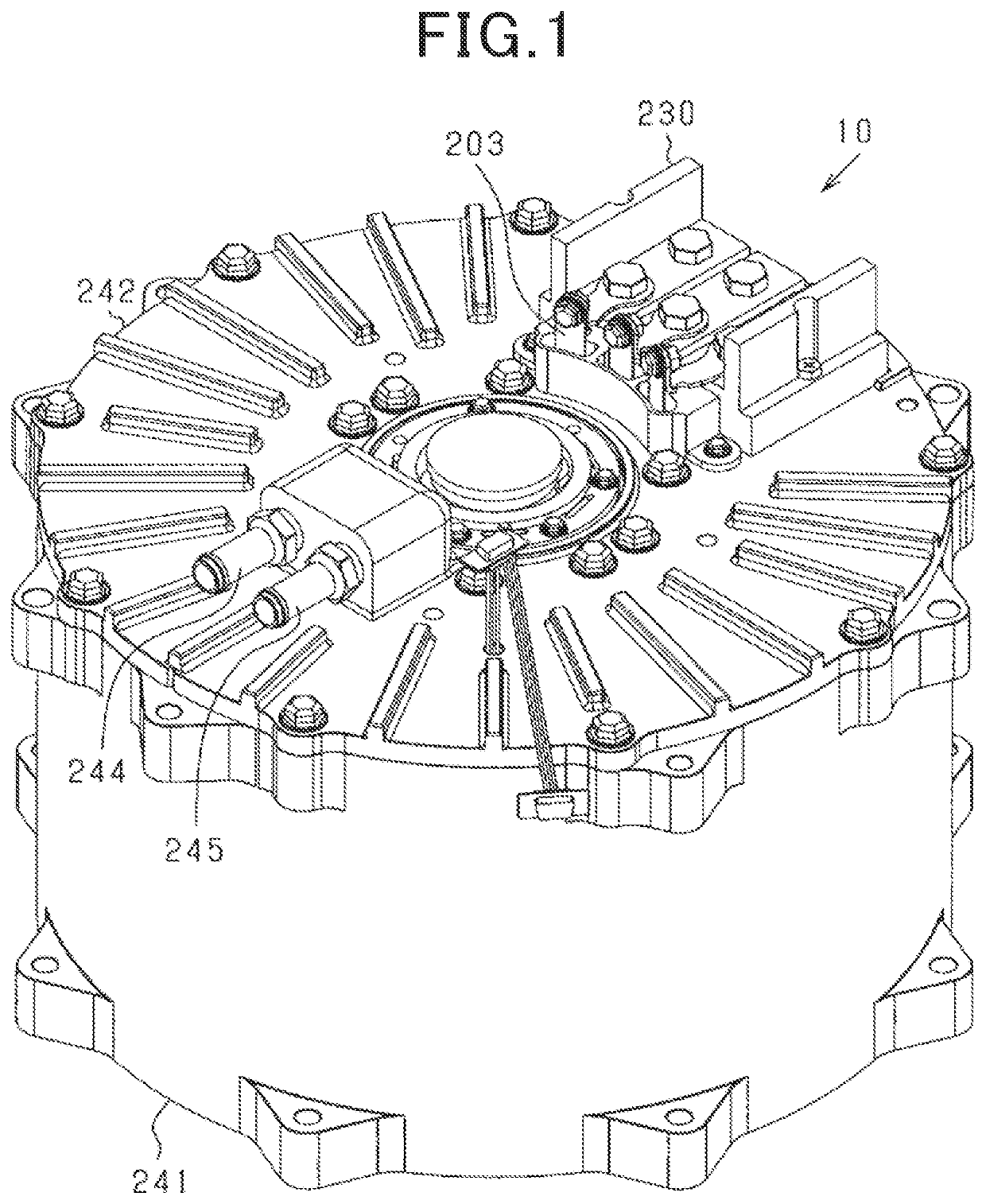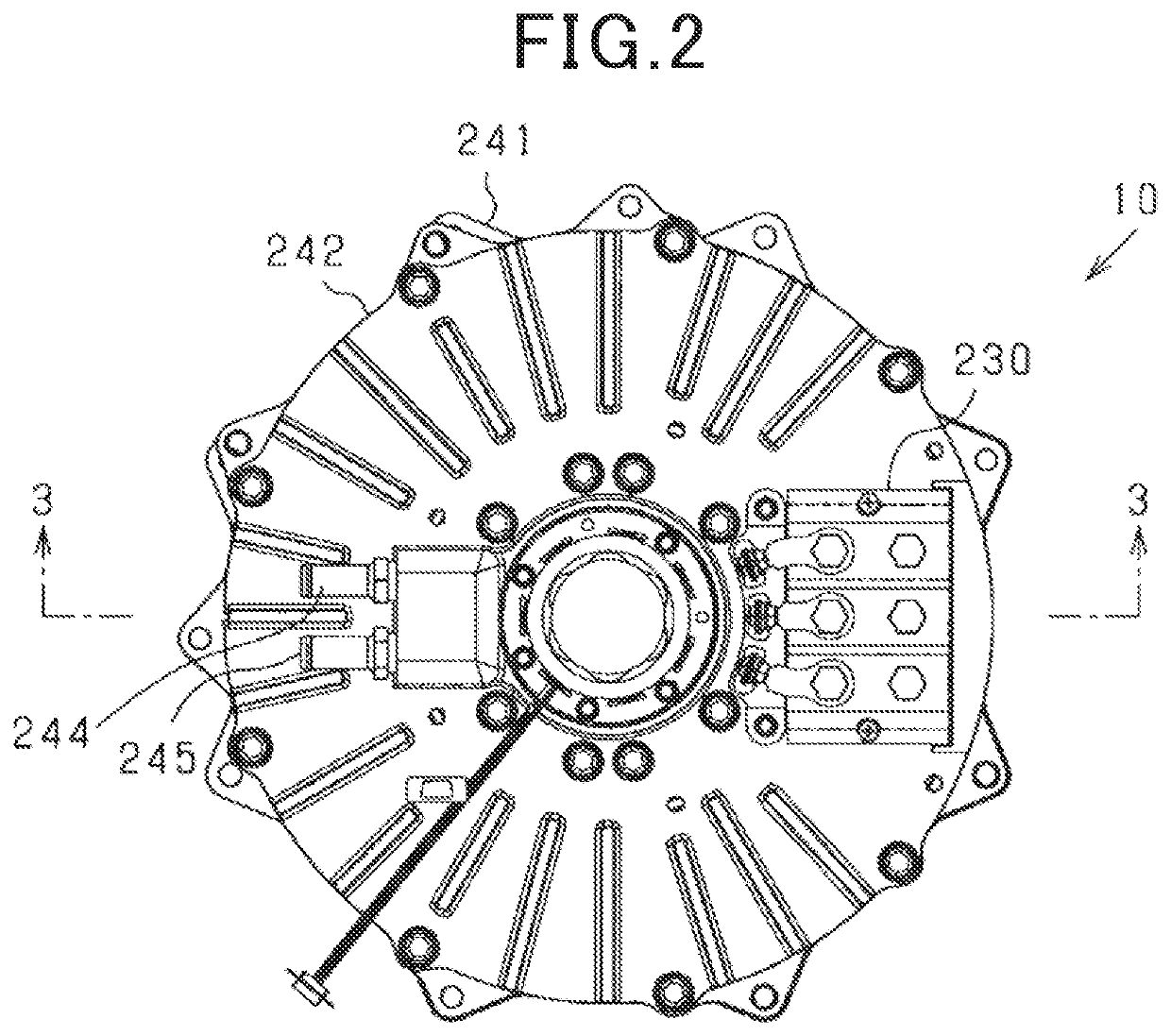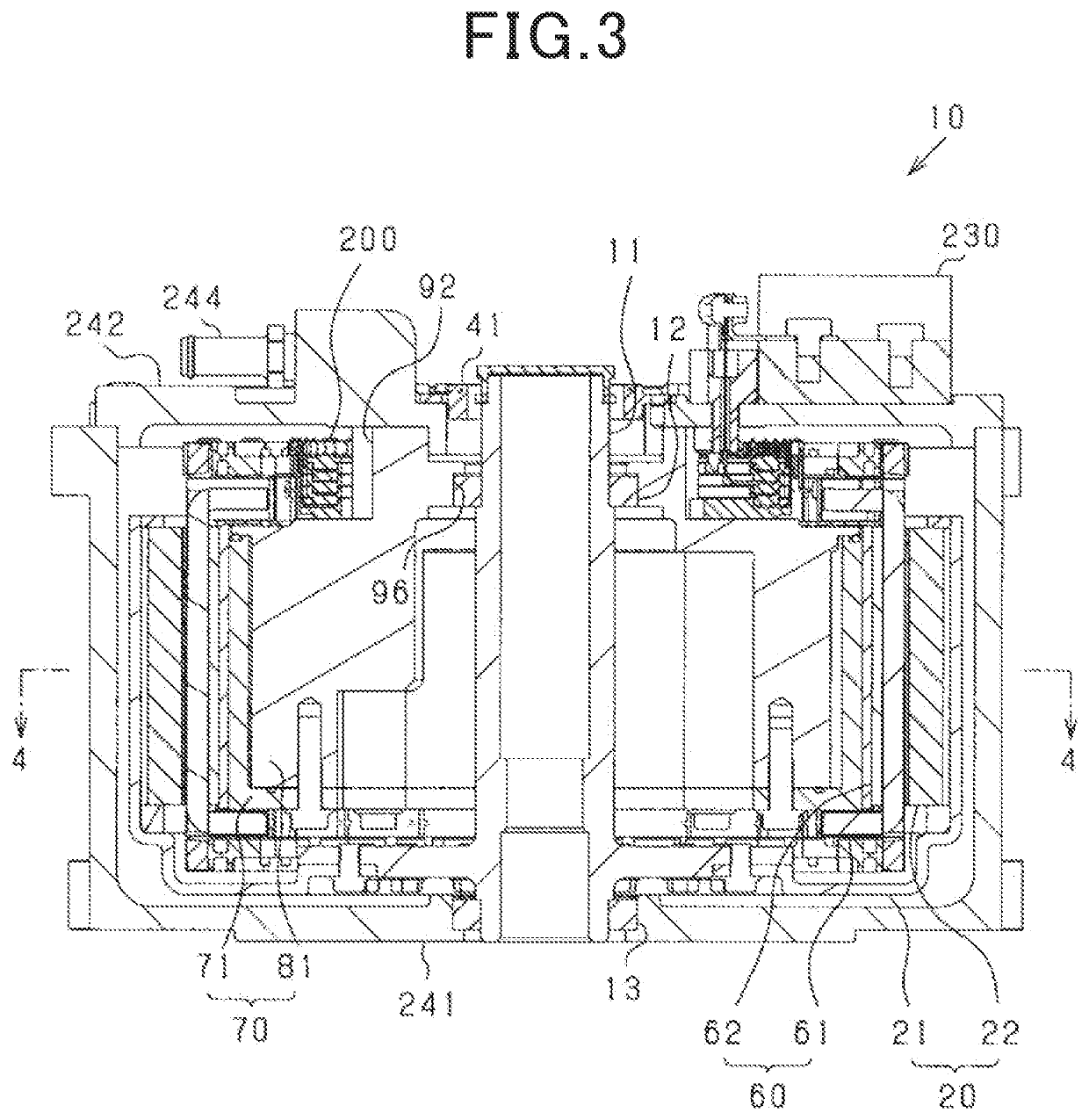Rotating electric machine and method of manufacturing rotating electric machine
a technology of rotating electric machines and electric motors, which is applied in the direction of windings, solid insulation, prevention/reduction of eddy current losses in winding heads, etc., can solve the problems of reducing the space factor of electrical conductors of element wires, affecting the performance of electric motors, and affecting the operation of electric motors. , to achieve the effect of suppressing eddy current, small electric potential differences between electrical conductors, and reducing the space factor
- Summary
- Abstract
- Description
- Claims
- Application Information
AI Technical Summary
Benefits of technology
Problems solved by technology
Method used
Image
Examples
first embodiment
Modifications of First Embodiment
[0202]Hereinafter, modifications of the above-described embodiment will be described.
[0203]The configuration of the magnets 32 in the magnet unit 22 may be modified as follows. In the magnet unit 22 shown in FIG. 38, the directions of the easy axes of magnetization in the magnets 32 are oblique to the radial directions; and straight magnet magnetic paths are formed along the directions of the easy axes of magnetization. With this configuration, it is also possible to make the magnet magnetic paths in the magnets 32 longer than the radial width of the magnets 32, thereby improving the permeance.
[0204]The magnet unit 22 may alternatively employ magnets that arranged in a Halbach array.
[0205]In each of the partial windings 151, the bridging portions 153 may be bent radially inward or radially outward. More specifically, with respect to the core assembly CA, each of the first bridging portions 153A of the first partial windings 151A may be bent to the co...
second embodiment
Modifications of Second Embodiment
[0244]The configurations of the electrical conductor wire CR and the stator coil 61 according to the above-described second embodiment may be modified as described below. In the following modifications, the differences from the configurations described in the above-described embodiments and modifications will be mainly described. Moreover, in the following modifications, explanation will be given taking the basic configurations according to the second embodiment as an example.
[0245]In the above-described second embodiment, the coefficient of linear expansion (or the linear expansivity) of the fusing layers 504 of the element wires 501 may be set to be different from the coefficient of linear expansion of the insulating coat 502. Specifically, as described above, the electric potential differences between the electrical conductors 503 of the element wires 501 are small. Moreover, even if the fusing layers 504 are damaged during the bundling of the el...
PUM
 Login to View More
Login to View More Abstract
Description
Claims
Application Information
 Login to View More
Login to View More - R&D
- Intellectual Property
- Life Sciences
- Materials
- Tech Scout
- Unparalleled Data Quality
- Higher Quality Content
- 60% Fewer Hallucinations
Browse by: Latest US Patents, China's latest patents, Technical Efficacy Thesaurus, Application Domain, Technology Topic, Popular Technical Reports.
© 2025 PatSnap. All rights reserved.Legal|Privacy policy|Modern Slavery Act Transparency Statement|Sitemap|About US| Contact US: help@patsnap.com



